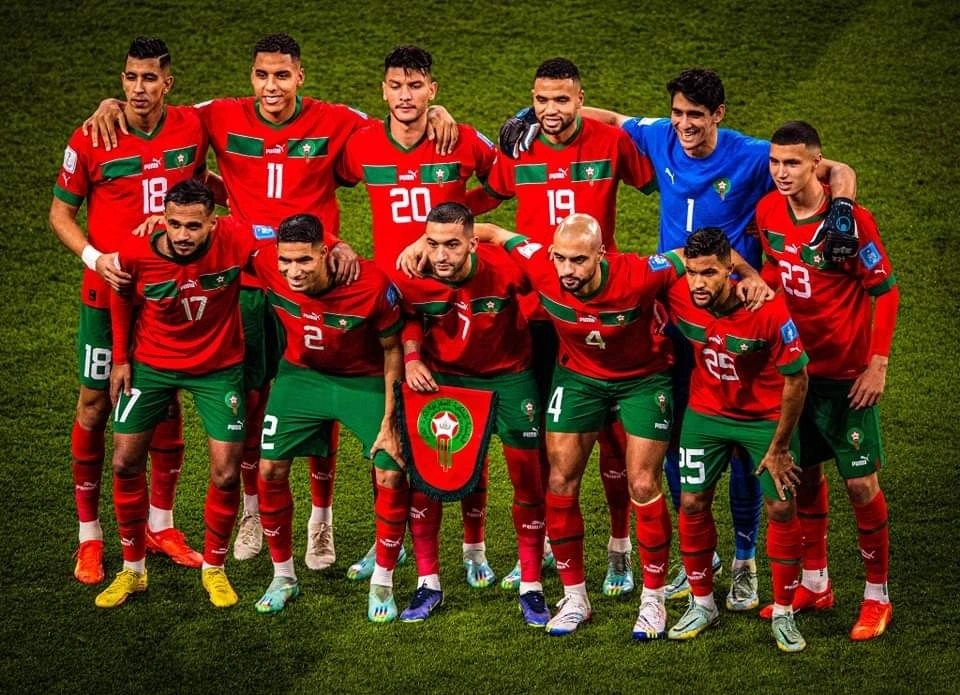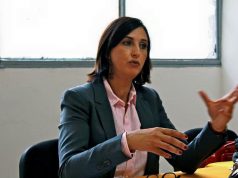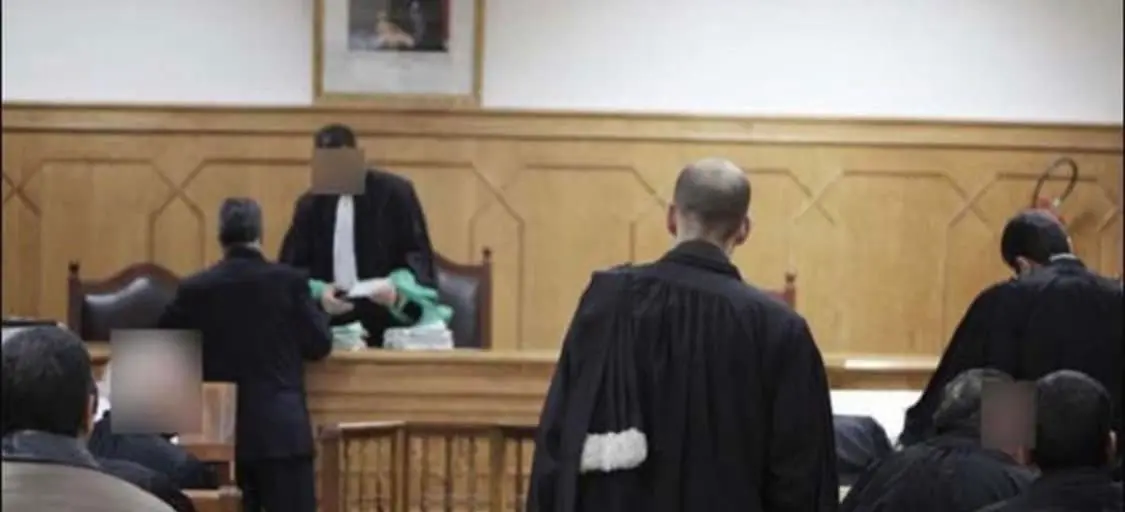The linguistic situation in Morocco is characterized by complexity. The presence of different local and foreign languages leaves room for diversity and creates a lot of sociolinguistic issues. The languages that are used in Morocco are Classical Arabic, Modern Standard Arabic, Moroccan Arabic, Amazigh, French and Spanish (together with English, which has recently started to gain significance). The presence and interaction of these languages indicates that the vast majority of Moroccans, especially the young generation, are bilingual if not multilingual.
Classical Arabic (CA), or Qur’anic Arabic, is a Semitic language in which the Holy Quran was revealed. It is highly improbable that Moroccans would use this language in its spoken form since it is a written language, its use usually confines to religious texts and some formal contexts. Modern Standard Arabic (MSA), which is based on CA, is the official language in Morocco[1]. Because it is codified and standardised, MSA is used in different domains such as education, media and administration. Although some linguists may refer to CA and MSA as one language since they share the same grammatical patterns, they are, in fact, two different languages from a linguistic perspective, given their differences at the level of their morphology, phonology and lexicon.
Foreign languages constitute an integral part of the Moroccan linguistic Market. The Moroccan constitution encourages their learning and use. As stated in Article 5:
“ … [The state] sees to the coherence of linguistic policy and national culture and to the learning and mastery of the foreign languages of greatest use in the world, as tools of communication, of integration and of interaction [by which] society [may] know, and to be open to differentw cultures and to contemporary civilizations.”
While several foreign languages are used in Morocco, only some of them enjoy a prestigious status. French is among these languages given its status as a second language. Although French had existed in Morocco before the French colonization (1912 – 1956), it started to gain its status as a second language during the protectorate era. As Sadiqi (2005: 278) states:
“French was introduced in Morocco as a civilized and superior language. It was used in most spheres of political power such as the government, the administration, and education.”
After Morocco’s independence in 1956, the State tried to give the Arabic language its previous status through Arabisation and modernisation. However, with the presence of other foreign languages (Spanish and English), French stood as a second language which constitues an essential vehicule of the economy and the job market. Furthermore, its daily use by Moroccans leads to different instances of Code-Switching/Mixing and borrowing.
Spanish was introduced in Morocco during the mid-sixteenth century and gained a significant place in the 17th century. The Spanish occupation of different Moroccan cities such as Ceuta, Melilia, Nador, El Hoceima, Tetouan and Larache contributed to the adoption of Spanish as a language of administration and education. After the country’s independence, Spanish lost its prestigious status in comparison with other foreign languages like French or English, and it is now used by some speakers in the aformentionned cities and other places in Morocco (Ennaji, 2005). However, this does not exclude the fact that MA was influenced by Spanish to a large extent. What shows this is the presence of several loanwords such as:
(1)
[fundˤo] fondo (bottom of the sea)
[kɑrrosɑ] carrosa (carrosse)
[simɑnɑ] semana (week)
[rwedˤɑ] rueda (wheel)
Nouns such as these, which are derived from Spanish, are now fully integrated in the lexicon of Moroccan Arabic.
Amazigh existed in Morocco before Arabic was introduced by the Islamic conquest. Although different scholars and sociolinguists have different opinions about the origin of Amazigh, the common and plausible idea is that it is an Afro-Asiatic language which was the mother tongue of the first inhabitants of North Africa Ennaji (2005).
Along with Arabic, Amazigh is also considered an official language in Morocco. As stated in the constitution:
“Tamazight [Berber/amazighe] constitutes an official language of the State, being common patrimony of all Moroccans without exception. An organic law defines the process of implementation of the official character of this language, as well as the modalities of its integration into teaching and into the priority domains of public life, so that it may be permitted in time to fulfill its function as an official language.” Morocco’s Constitution of 2011, Article 5
The officialisation and standardisation of the Amazigh language has always been a debatable issue in Morocco. Some linguists and scholars encourage the use of Amazigh in its written form to teach school subjects, while others tend to consider it as a spoken language and its officialisation and standardisation, according to them, have never proved successful in Morocco.
There are three major varities of Amazigh spoken in Morocco, namely Tashelhit in the south, Tamazight in the center, and Tarifit in the north Sadiqi (2006). However, it should be noted that within these varieties, several other dialects or dialectal variations can be found depending on the region or the town where the variety is spoken.
Moroccan Arabic is another component of the Moroccan linguistic market and it is the most widely used language in Morocco. Since it is neither codified nor standardised, it is mostly seen as a variety but not as a literary language. Moreover, given its contact with CA, Furguson (1959) argues that MA stands in a diaglossic relation with CA; while CA is the High variety, MA is considered the Low variety.
It is noteworthy that the use of the term “Moroccan Arabic” is ambiguous because it does not refer to any specific variety spoken in Morocco. Therefore, when talking about MA, most writers refer to the descendant variety of Arabic that is spoken in Morocco as a whole.
Linguists and scholars differ to a large extent when it comes to classifying Moroccan Arabic in terms varieties. First of all, some linguists such as Boukous (1998) divide MA into four major varieties as follows:
(2)
(i) The Urban Variety
(ii) The Mountain Variety (Jebli)
(iii) The Bedouin Variety
(iv) The Hassani Variety
Other linguists like Ennaji (2005), follow two approaches. First historically, MA can be divided into the non-Bedouin dialect, the Bedouin variety, and the Andalusian Arabic variety. In the modern sense, MA can be divided into Urban (‘mdini’) and Rural (‘ʕrubi’) varieties. Moreover, Ennaji (ibid.) goes further and subdivides the urban dialect of MA into different regional varities presented as follows:
(3)
a) Northern dialects spoken in Tangiers, Tetouan, Larache and other north cities.
b) The Fassi variety spoken in Fés.
c) The Moroccan dialect of Rabat and Casablanca.
d) The Marrakshi and Agadiri dialect which are influenced by Tashelhit Amazigh.
e) The Hassani dialect used in the southern Saharan regions.
Regardless of these divisions, what is common between all the varieties of MA is that they all share a degree of mutual intelligibility and they form what Bloomfield (1933, 51) referred to as a dialect continuum or dialect area.
In addition to all these varieties of MA, many linguists postulate the existence of another spoken variety that is also neither codified nor standardised. This variety is inluenced by CA, MSA and MA since its grammar is the same as MA while its lexicon and vocabulary is a mixture of the three languages.
While this variety is commonly mentionned by Moroccan linguists, it is labelled differently using different terms and appelations. For instance Youssi (1986) refers to it as Median Moroccan Arabic:
“ L’arabe médian, […] constitue une variété hybride empruntant grosso modo à l’arabe standard son lexique et à l’arabe dialectal sa morphologie et sa phonologie, l’arabe dialectal ici étant fondamentalement le variété citadine dipourvue des marques idiosyncrasiques ”
On the other hand, Ennaji (2005: 50) labels it as Educated Spoken Arabic and defines it as: “… a polished and polite form of MA whose lexicon is affected by that of standard Arabic.” Furthermore, following Furguson’s description of diaglossia, Ennaji (ibid.) argues that in addition to the high variety (CA) and the low variety (MA), there are other varieties in between. First, the presence of MSA which is used in different domains more than CA results in a situation of triaglossia. Besides, with the addition of ESA between MSA and MA, the result will be a form of “Quadriglossia” represented in the following diagram:
It should be evident that the Moroccan linguistic situation is characterized by both diversity and complexity. The competition between mother tongues, on the one hand, and foreign languages on the other results in different linguistic phenomena (Bilinguialism/Multilingualism, Diaglossia/Triglossia/Quadriglossia, Code-switching/Borrowing) and also contributes to the linguistic change of varieties and the emergence of new ones.
[1] “Arabic is [demeure] the official language of the State.
The State works for the protection and for the development of the Arabic language, as well as the
promotion of its use” Morocco’s Constitution of 2011, Article 5
Works Cited
Bloomfield, L. (1933). Language. New York: Henry Holt.
Boukous, A. (1998) La situation sociolinguistique au Maroc. In Plurilinguismes (Le Maroc) 16, pp. 5-30. Centre d’Etudes et de Recherches en Planification Linguistique, Paris.
Ennaji, M. (2005). Multilingualism, Cultural Identity and Education in Morocco. Springer: University of Fés, Morocco
Ferguson, C. (1959). Diaglossia. In Word 15, pp. 325-340.
Morocco’s Constitution of 2011. Retrieved from : http://www.constituteproject.org
Sadiqi, F. (2005). The Gendered Use of Arabic and other Languages in Morocco. In E. Benmamoun, Perspectives on Arabic Linguistics XIX (pp. 277-299). Urbana, Illinois: John Benjamins.
Sadiqi, F. (2006). The Language Situation in Morocco. Encyclopedia of Language and Lingusitics.
Youssi, A. (1986). L’arabe marocain médian. Analyse fonctionnaliste des rapports syntaxiques. Thèse d’état. Université de Sorbonne Nouvelle, Paris III.
[symple_box color=”blue” text_align=”left” width=”100%” float=”none”]

Abdessamad Saidi is a Master student at the faculty of Letters & Humanities in Rabat’s Mohammed V University. He earned his Bachelor’s degree in Linguistics from the same university. His main interests revolve around: linguistics, computer science, and media.
[/symple_box]








